MP Board Class 9 History Chapter 2 – Socialism in Europe and the Russian Revolution
MP Board Solutions for Class 9 History Chapter 2 – Socialism in Europe and the Russian Revolution are essential for understanding global ideological shifts in the MPBSE curriculum. These well-structured answers help students grasp topics like the origin of socialism, the role of the working class, the Russian Revolution, and the leadership of Lenin. Designed as per the latest syllabus, these solutions strengthen conceptual clarity and improve exam preparation. Ideal for revision and practice, they promote historical awareness and critical thinking, making them a valuable study tool for scoring well in Class 9 Social Science exams.
MP Board Solutions For Class 9 History – Socialism in Europe and the Russian Revolution – Exercise Images
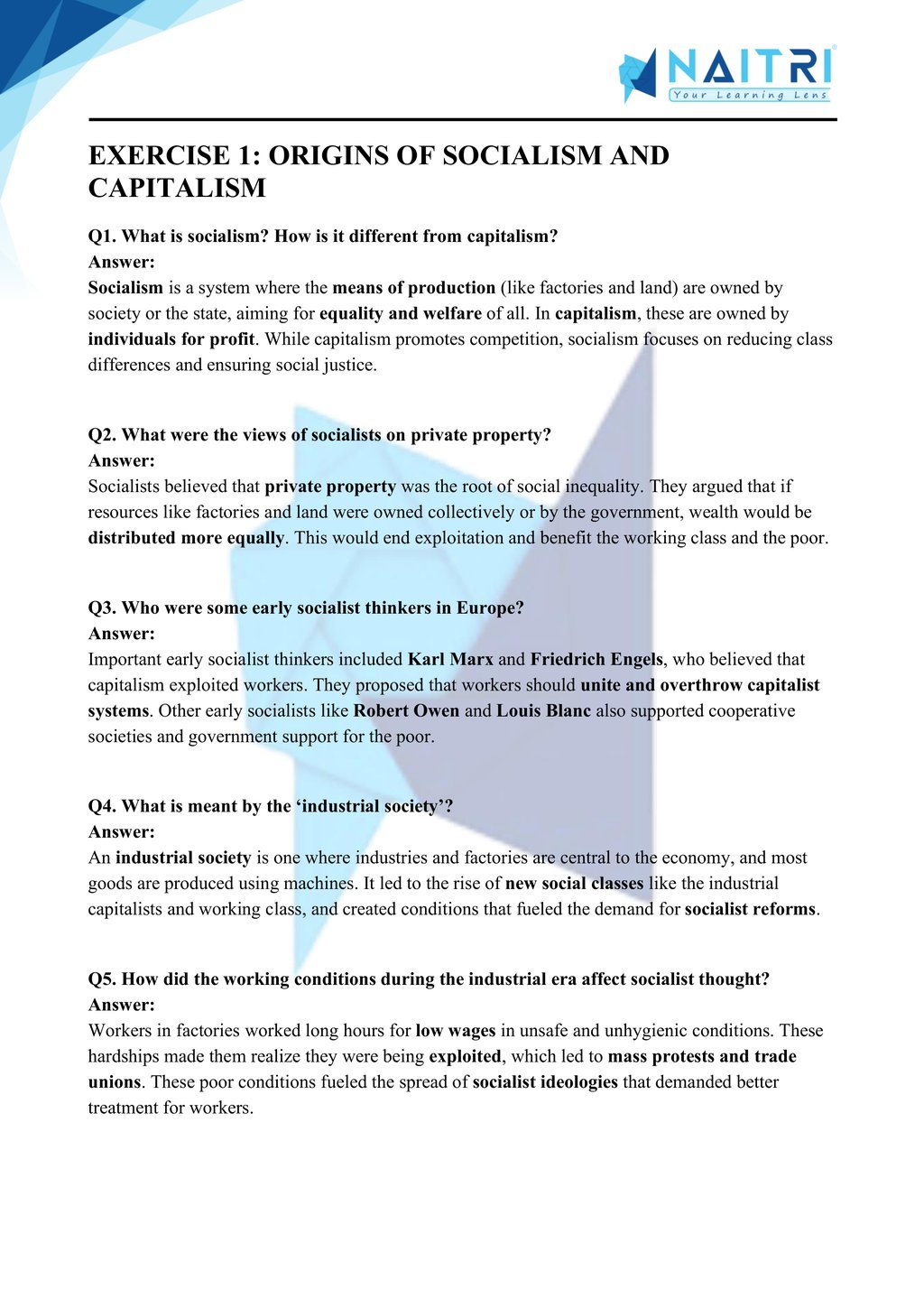
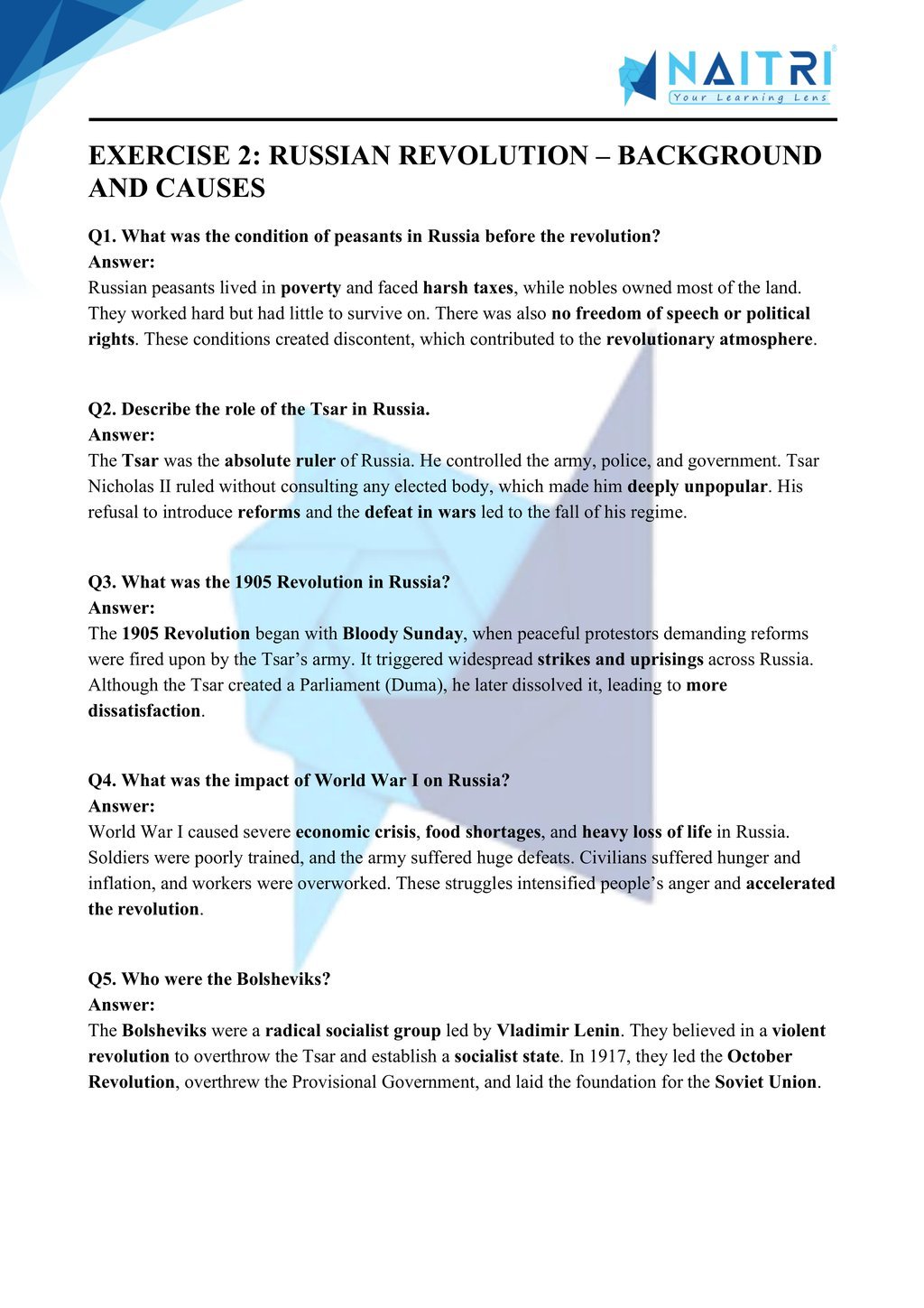
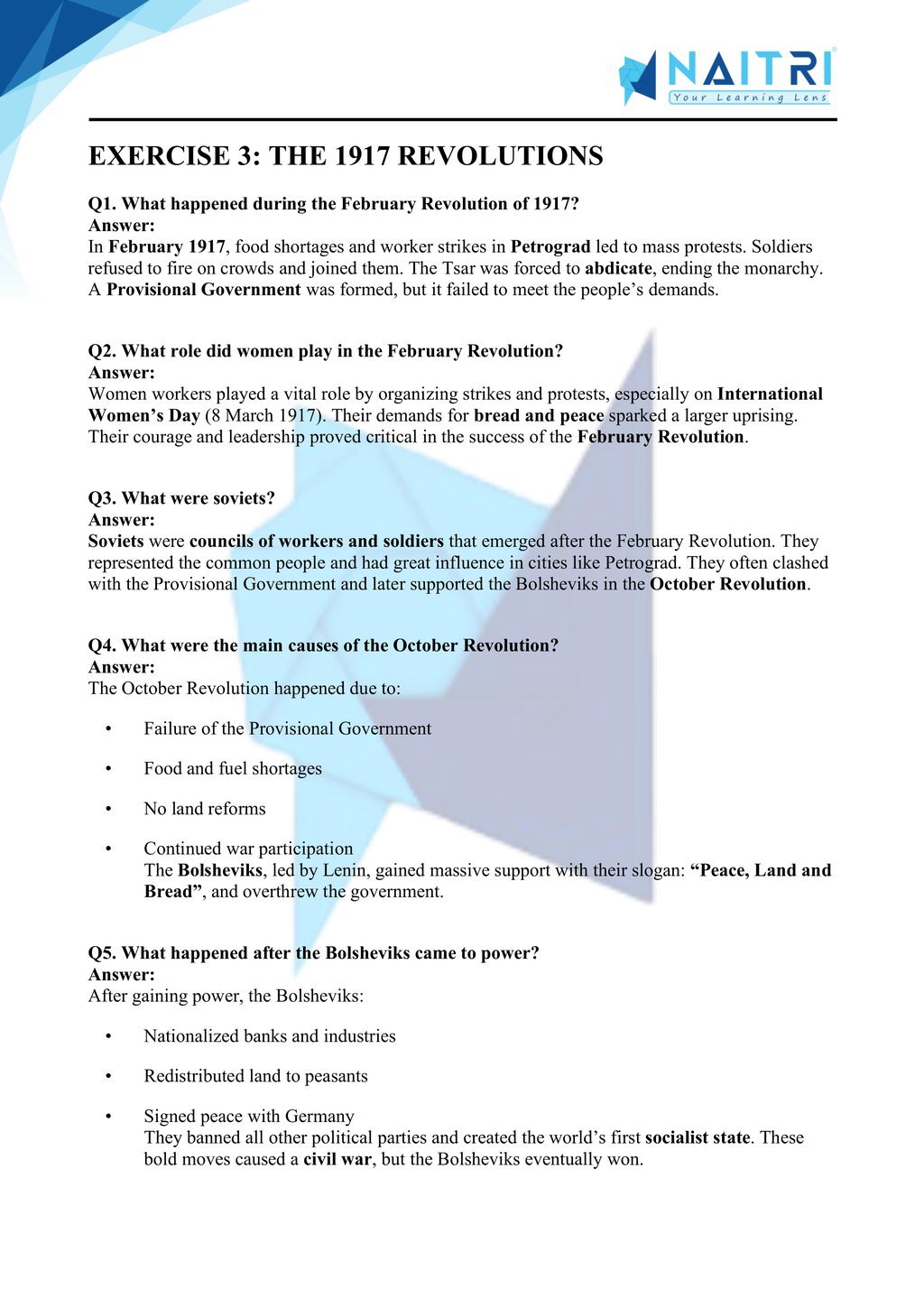
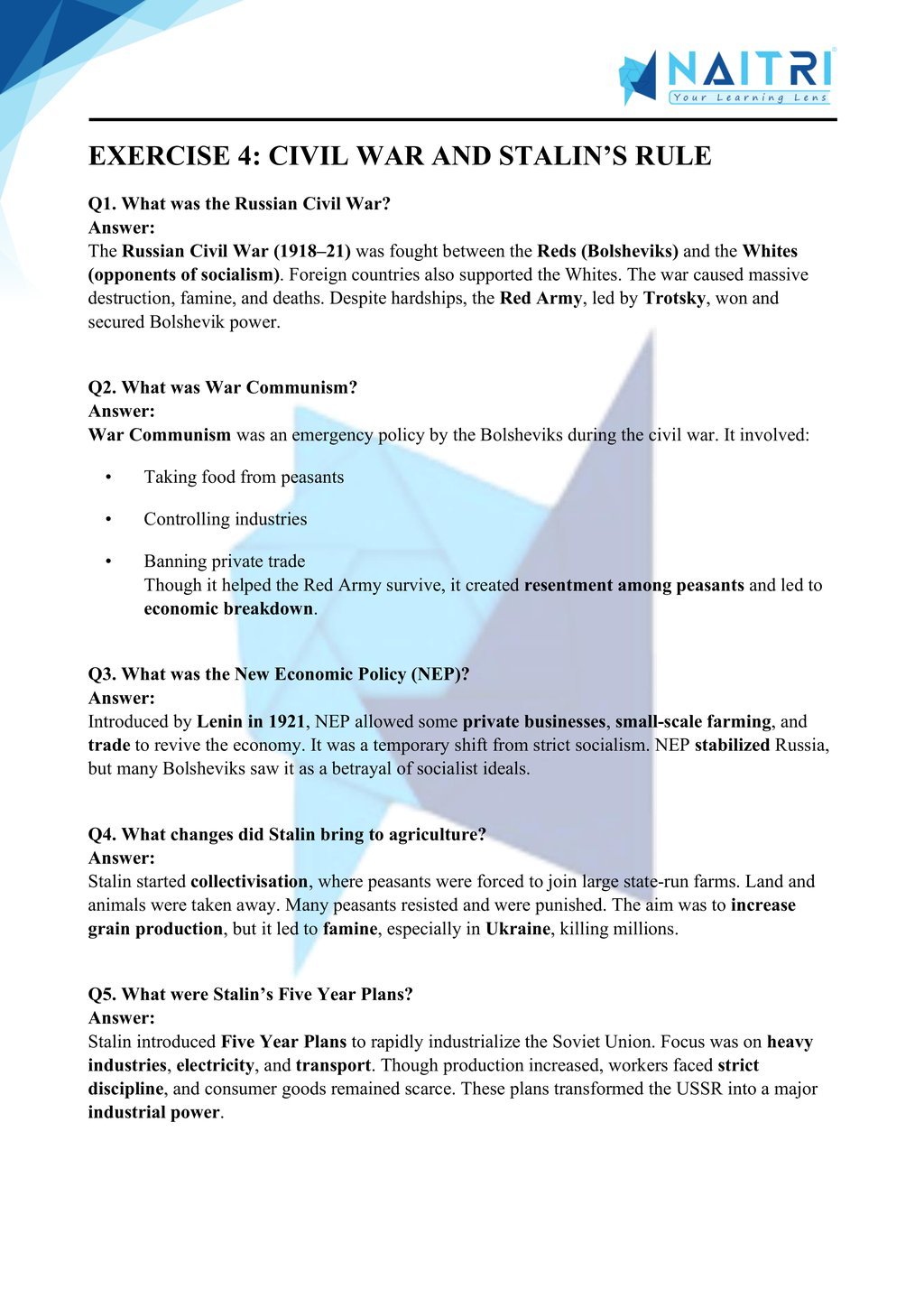
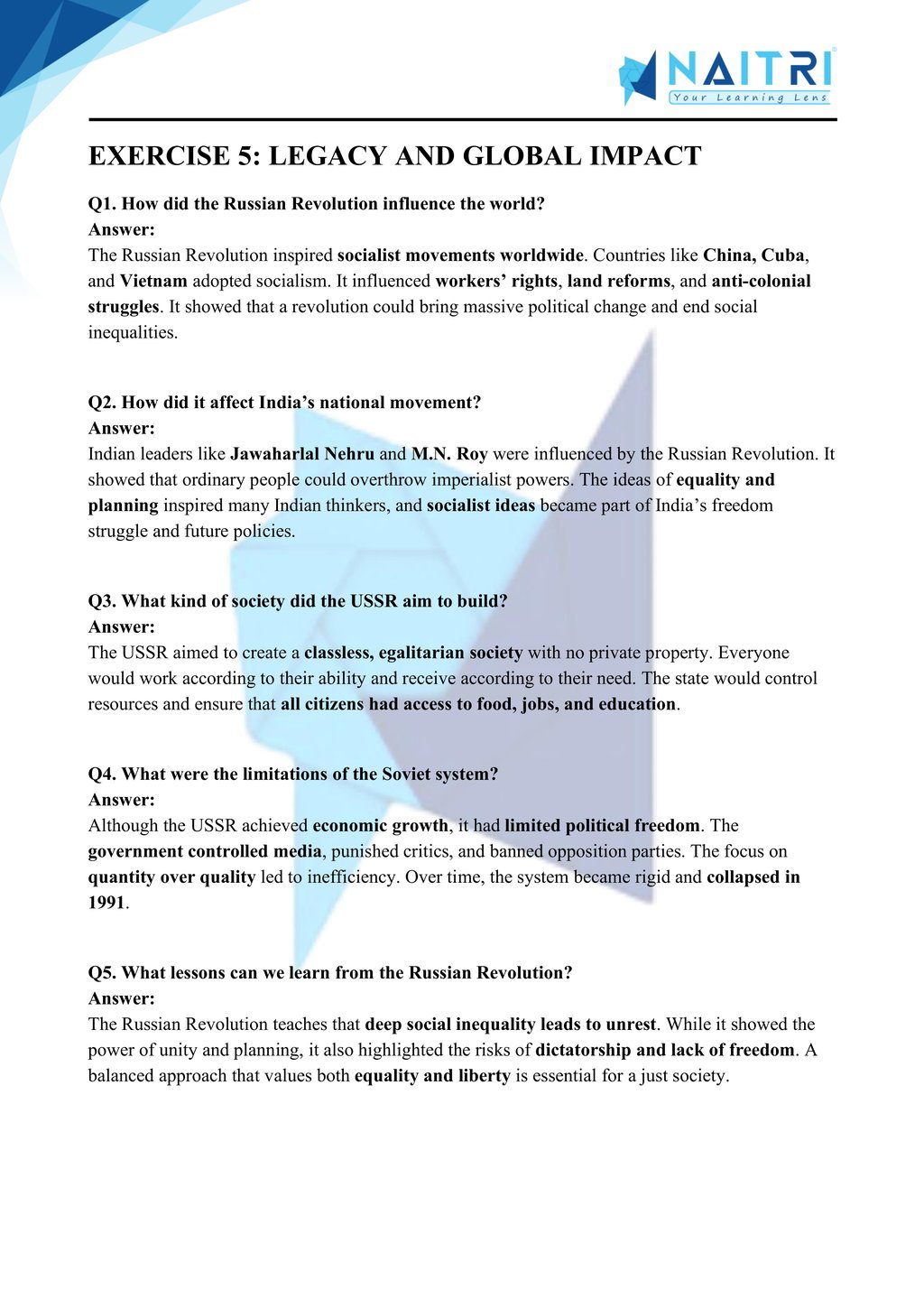
Experience History Like Never Before – With AR!
Understanding Socialism in Europe and the Russian Revolution is now more exciting and immersive! With the NAITRI App, you can explore complex history concepts through Augmented Reality (AR). Watch ideologies clash, revolutions erupt, and new political systems emerge — right in front of you. Our AR-powered lessons make learning interactive, 3D, and fun, helping you retain concepts better and enjoy every topic.



Visualize . Interact . Understand . The future of learning is here
Socialism in Europe and the Russian Revolution – Important Questions with Answers
What is socialism?
Answer: Socialism is a political ideology advocating equal distribution of wealth, state ownership of property, and welfare of all, aiming to remove class inequalities in society.What conditions led to the Russian Revolution?
Answer: Poor working conditions, autocratic Tsarist rule, losses in World War I, economic crisis, and food shortages led to rising unrest and ultimately the Russian Revolution.Who were the Bolsheviks?
Answer: The Bolsheviks were a radical socialist group led by Vladimir Lenin. They believed in immediate revolution, armed struggle, and establishing a communist state.What role did Lenin play in the revolution?
Answer: Lenin led the Bolshevik Party, criticized the Provisional Government, and led the October Revolution, promising peace, land, and bread to gain mass support.What was the October Revolution?
Answer: In October 1917, the Bolsheviks seized power from the Provisional Government in Petrograd, marking the start of communist rule in Russia.Who was Karl Marx and what were his ideas?
Answer: Karl Marx was a philosopher who believed in class struggle, predicted a workers’ revolution, and wanted to build a classless, communist society.What was the Duma?
Answer: The Duma was a parliament established after the 1905 revolution but had limited power as the Tsar retained absolute authority.What triggered the 1905 Revolution?
Answer: The 1905 Revolution was triggered by the Bloody Sunday massacre, economic hardship, and public anger against the Tsar’s oppressive regime.What was Lenin’s New Economic Policy (NEP)?
Answer: The NEP was introduced in 1921 to revive the economy by allowing private trade, encouraging small industries, and reducing state control temporarily.What was the Civil War in Russia?
Answer: From 1918–1921, the Red Army (Bolsheviks) fought against the White Army (anti-communists) in a bitter civil war for control over Russia.What is meant by a communist state?
Answer: A communist state is governed by a single party, where private property is abolished, and the state controls the economy and resources.How was land redistributed after the revolution?
Answer: After the revolution, land owned by the nobles and church was confiscated and redistributed to peasants, promoting equality and support for the regime.What changes did the Bolsheviks bring?
Answer: The Bolsheviks withdrew from World War I, nationalized industries, abolished private property, and transformed Russia into a one-party communist state.What is War Communism?
Answer: War Communism was a policy during the civil war, where the state took control of food production, requisitioned grain, and suppressed private trade.Why did many oppose Bolshevik rule?
Answer: Many opposed Bolshevik rule due to loss of freedoms, violent policies, land confiscation, and suppression of political opponents and religious institutions.What were Soviets?
Answer: Soviets were councils of workers and soldiers that emerged during the revolution, initially as grassroots movements but later dominated by the Bolsheviks.What was the Comintern?
Answer: The Comintern (Communist International) was formed to promote global communism and support revolutions in other countries from Moscow.What was collectivization?
Answer: Under Stalin, collectivization merged small farms into large collective farms, aiming to increase agriculture production but caused famine and resistance.What happened to the Romanov family?
Answer: The Romanov royal family, including Tsar Nicholas II, was executed by the Bolsheviks in 1918 to prevent the return of monarchy.What was Lenin’s slogan?
Answer: Lenin’s slogan, “Peace, Land, and Bread,” symbolized the end of war, land redistribution, and food supply—gaining mass support.How did the revolution affect peasants?
Answer: Peasants gained land, but were later forced into collectivization under Stalin, leading to loss of autonomy and famine.What was the role of women in the revolution?
Answer: Women participated in protests, strikes, and later gained rights like voting, education, and equal pay under Soviet policies.How did Russia become the USSR?
Answer: After the October Revolution, Russia was renamed the Union of Soviet Socialist Republics (USSR) in 1922 under communist rule.What was the Red Army?
Answer: The Red Army was the military force of the Bolsheviks, organized by Leon Trotsky, and fought during the Russian Civil War.How did the Russian Revolution impact the world?
Answer: It inspired global communist movements, worried capitalist powers, and led to the spread of Marxist ideology across Asia and Europe.
Socialism in Europe and the Russian Revolution traces the rise of socialist ideas in Europe following the French Revolution and their eventual impact in Russia. Students learn about Karl Marx, the Bolsheviks, and the causes behind the 1917 Russian Revolution. The chapter explains how the revolution transformed Russian society and governance, marking the beginning of the world’s first socialist state. It helps students understand class struggle, workers’ rights, and the global impact of communism.
Download Naitri App
Easy, Visual Learning — Right on Your Phone
Learn with Augmented Reality! The Naitri app makes CBSE and MP Board concepts interactive and fun — even in low-resource settings. Watch lessons, complete homework, take tests, and track progress — all in one place. Anytime. Anywhere.
Available on








